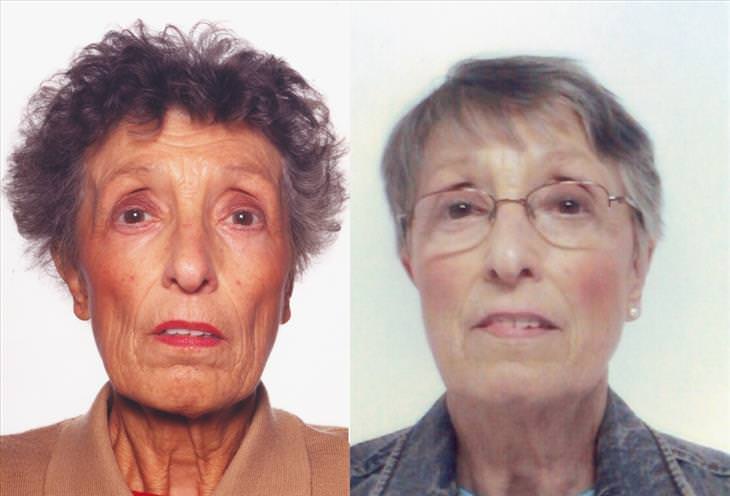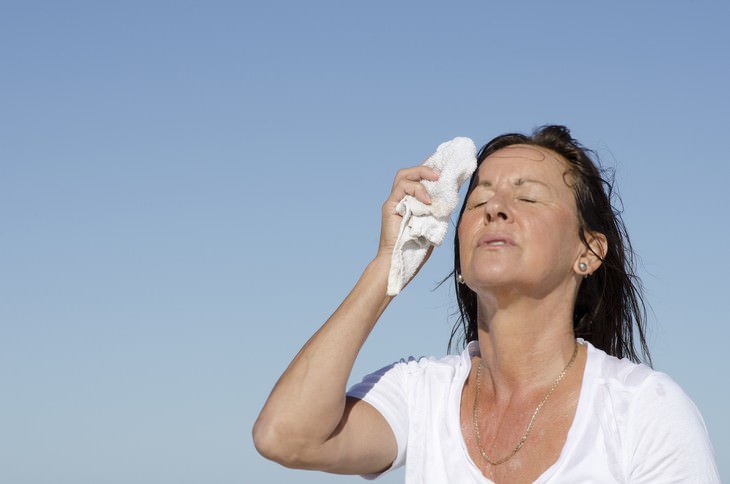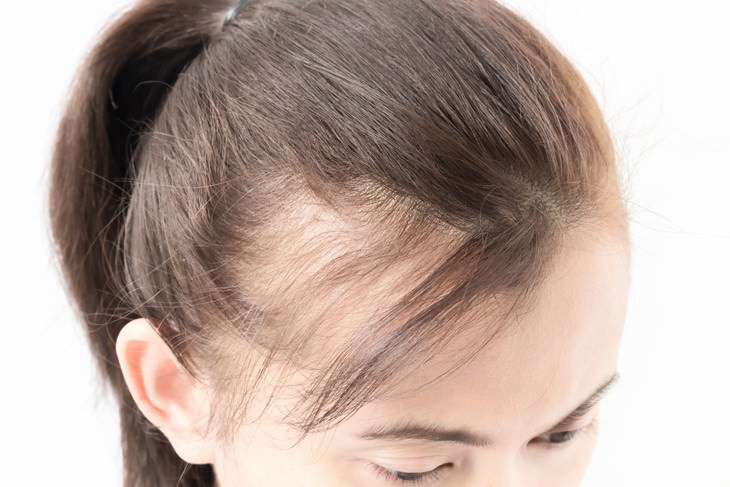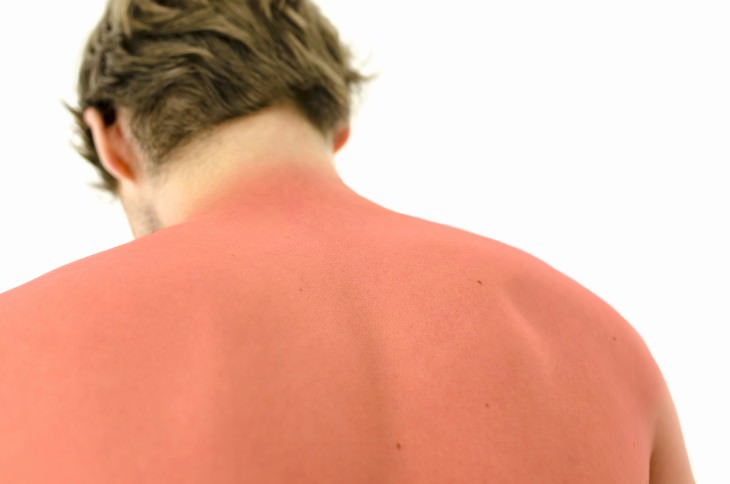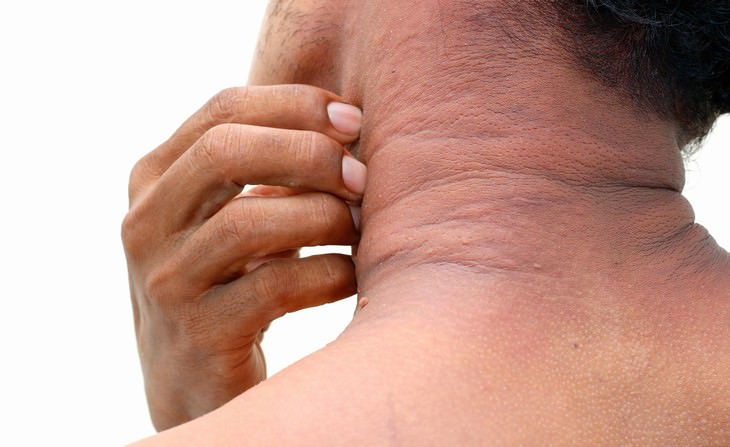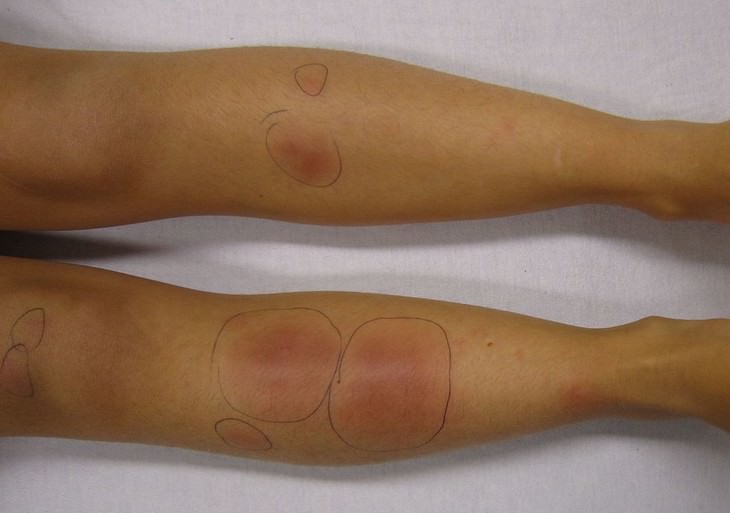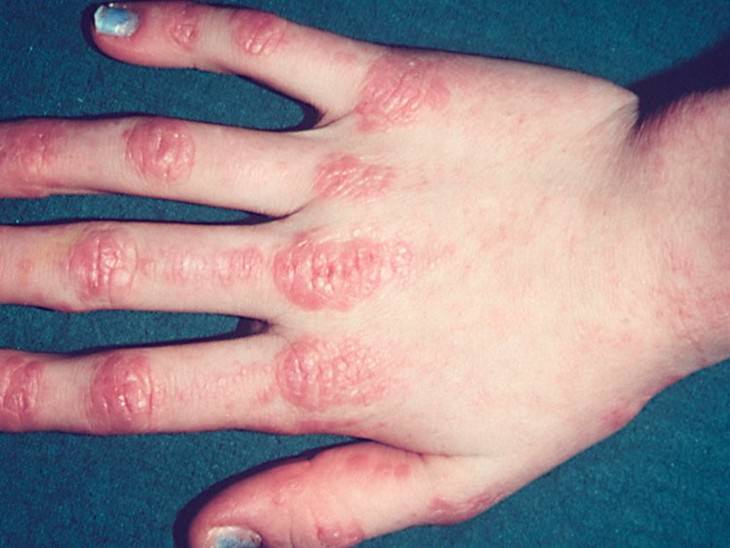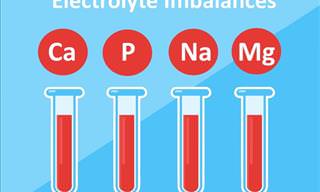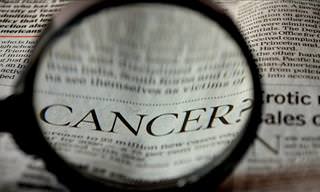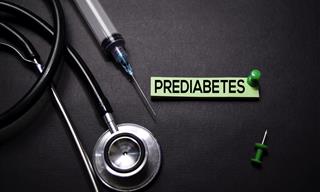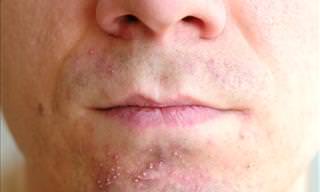1. Skin That Turns Tan For No Reason
Sudden onset skin darkening or patchy skin pigmentation, especially around scars or bends may be an early symptom of a rare hormonal dysfunction called Addison’s disease, that, on average, affects around 1 in 10.000 people and is more common among middle-aged women.
The condition occurs when the adrenal glands don’t produce enough steroid hormones, such as cortisol and aldosterone.
Apart from skin pigmentation, patients with Addison’s disease exhibit the following symptoms:
- Fatigue
- Abdominal pain
- Weight loss.
Interestingly, sudden skin tanness is often the first symptom of the disease, sometimes occurring years before the rest of the symptoms.
2. Constantly Sweating or Having Very Dry Skin
A thyroid that isn’t working properly can trigger specific skin changes.
Both an overactive and an underactive thyroid gland is bad, as it produces hormones that regulate body temperature, heart rate, metabolism, and other body functions, all of which depend on a specific rate and magnitude that can be easily thrown off balance.
When a person has an overactive thyroid, they are said to have hyperthyroidism, whereas an underactive gland causes a condition called hypothyroidism.
A thyroid that is too active increases body temperature and sweating, which is why people suffering from hyperthyroidism will often feel that their skin is warm and moist to the touch.
When the thyroid gland under produces hormones, it will have the opposite effect: the temperature will drop and the sweat glands will be less active, which can make one’s skin feel cold, dry, or even rough to the touch.
3. Hair Thinning
Hair loss and thinning can be an indication that your thyroid isn’t functioning properly as well. The reverse pattern, however, isn’t the case, and by far not all people who suffer from hair loss have thyroid problems.
When the thyroid gland overproduces hormones, patients may experience hair loss. If, however, the opposite occurs and the gland doesn’t produce enough thyroid hormones, a person can lose hair in a very specific pattern: the outer sides of the eyebrows may become thinner.
4. Skin Itching
Extreme itching can indicate cancer. To be more precise, an unbearable itch is a symptom of Hodgkin lymphoma, a type of cancer that alters lymphocytes, which is a type of white blood cell.
These cells are part of our immune system and are produced by lymph nodes, which is why the other symptom of this condition are enlarged and painful lymph nodes on the sides of the neck, the armpits and the groin area.
However, both or either of these symptoms can be caused by many other, more common diseases, such as infections, just to name one, which makes the condition somewhat difficult to pinpoint.
5. Sun Sensitivity
If you find that your skin is increasingly sensitive to the sun and burns easily even when you protect it by wearing sunscreen, it may point to an disease called systemic lupus erythematosus (SLE), simply known as lupus.
It is an autoimmune condition, which means that the immune system mistakes its own organs and tissues for a foreign object and attacks them, which results in a variety of manifestations, many of which are skin symptoms.
Other symptoms of lupus include:
- A butterfly-shaped rash on the cheeks
- Mouth ulcers
- Fatigue
- Painful and swollen joints
- A fever
- Chest pain, etc.
As for the photosensitivity, it has been estimated that about half of lupus sufferers react more than normal to sun exposure.
6. A Hump Between the Shoulders
Another hormonal dysfunction of the adrenal glands is Cushing's syndrome. It occurs when the adrenal glands overproduce cortisol, commonly known as the stress hormone because it is secreted in response to stress.
Cortisol has a variety of functions in the human body, among which is blood sugar, immune and metabolic regulation, which explains why Cushing’s patients suffer from abnormal obesity, hypertension, as well as skin that doesn’t heal.
Another finding are inflamed, red stretch marks that can erupt spontaneously. But one of the most unusual symptoms of Cushing’s syndrome is a fatty lump between the shoulders, often referred to as the buffalo hump.
Both of these skin symptoms are presenting signs of the condition, which means that they can help distinguish Cushing’s from other diseases.
7. Thicker and Darker Skin On the Neck and Elbow Folds
One of the first signs of diabetes in children can be a thicker and darker skin in certain body parts, such as neck and elbow folds. This condition is called acanthosis nigricans (AN), and it is a sign for pediatricians that they should check a child for diabetes.
As it is the case with many of these symptoms, however, it can mean nothing whatsoever, as certain people who don’t have diabetes can also exhibit AN.
8. A Tender & Slightly Red Spot On the Skin
Spots like the ones you can see in the picture above called erythema nodosum can be a sign of inflammatory bowel disease (IBD). These tender spots aren’t always so abundant as we can see on the picture, and they are not always an indication of IBD, but they may be a reason to check for said condition.
Another skin condition related to IBD are pyoderma gangrenosum, which are skin lesions that don’t heal.
IBD is an umbrella term used to denote 2 conditions: Crohn’s disease and ulcerative colitis, both of which are chronic inflammations of the digestive system that make digestion painful and can cause dangerous complications.
Symptoms of IBD include:
- Diarrhea
- Reduced appetite
- Fever
- Fatigue
- Abdominal pain
- Blood in stool
- Unintended weight loss
IBD is a serious condition that has become more prevalent in the past 20 years, with as many as 3 million patients being diagnosed with the condition in the United States alone.
9. A Specific Kind Of Rash On the Backs Of the Hands
The last skin symptom on this list is a rash that occurs on the tops of the hands called Gottron’s papules. It can appear suddenly, or develop over a long time, and it is a defining symptom of a long-term inflammatory disorder called dermatomyositis (DM).
Other skin conditions, such as the so-called shawl sign, which is a rash that covers the upper back, arms and shoulders in a shawl-like pattern, can also point to this dangerous disease, which mainly affects muscles. DM can also manifest itself through muscle weakness, weight loss, lung inflammation and light sensitivity.
DM is a very debilitating condition, the causes of which are unknown. Patients with DM find it increasingly-difficult to do everyday tasks that require muscle use, starting from lifting objects and climbing stairs to even standing up from a sitting position.
Please keep in mind that the information included in this article is for information purposes only and isn’t a proper diagnosis. If you have any skin concerns, make sure talk to your doctor.
 Go to BabaMail
Go to BabaMail


